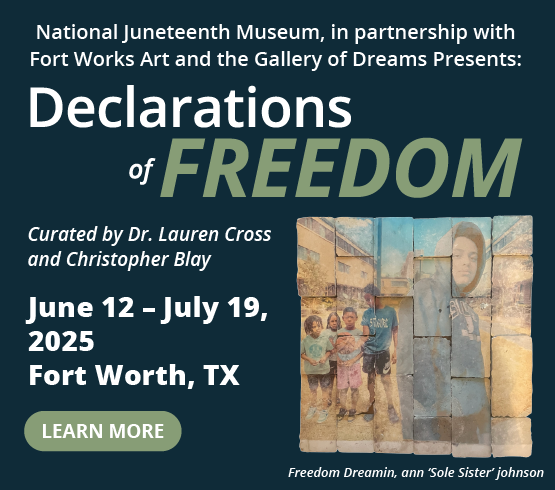Brenda Ciardiello calls herself an art evangelist spreading “the Gospel of art is for everyone.”
But the Fort Worth watercolorist and poet knows that understanding how to look at and think about an abstract portrait can be overwhelming for the untrained eye.
Now as a 2021 Carter Community Artist, she gets to spread that message across North Texas.
The Carter Community Artists initiative was established in 2018 by the Amon Carter Museum of American Art. Each year, four local artists are selected by museum staff for the yearlong, paid fellowship bridging the museum with the North Texas region through workshops, collaborations, events and other creative endeavors designed for audiences of all ages. Ciardiello is joined by Kalee Appleton, Michelle Cortez Gonzales, and Kasey Short.
“By working with artists, we’re bringing outside voices into the museum. Staff are co-creating experiences with artists,” Blake said.
Ciardiello sees her role as bridging the gap between a visitor with no background in art and a curator with a certain area of expertise. “We bring it back home. By translating complex artspeak, I hope the visitor can say, ‘this is for me.’”
Some students are meeting artists for the first time. An artist’s presence, according to Blake, dispels the idea that being a full-time practicing artist is unachievable. Blake recalled an elementary school student telling one of the artists, “This is your job! That’s so cool!’”
When in the galleries, and especially with adult visitors, the artists talk about process, often alongside the trained educators. While they work with all ages, instilling visual literacy in adults is crucial to advancing art education–– and ensuring visitors return to the museum.
“They’re co-teaching and bringing in a perspective. In some cases, they may be teaching in the galleries and lending their expertise,” Blake said.

1 ⁄4
Carter Community Artist Michelle Cortez.
Photos courtesy of the Amon Carter Museum of American Art.

2 ⁄4
Carter Community Artist Brenda Ciardiello.
Photos courtesy of the Amon Carter Museum of American Art.

3 ⁄4
Carter Community Artist Kasey Short.
Photos courtesy of the Amon Carter Museum of American Art.

4 ⁄4
Carter Community Artist Kalee Appleton.
Photos courtesy of the Amon Carter Museum of American Art.
The first test of virtual learning for Ciardiello and her cohort took place earlier this month. For the virtual workshop, museum staff highlighted artworks from the current exhibit Mythmakers: The Art of Winslow Homer and Frederic Remington, which runs through February 28. Ciardiello then guided participants on how to mix colors to create a nocturnal landscape painting inspired by the exhibition.
She’s planning a workshop using the Carter’s building and landscape, with the native Texas plants abutting the limestone façade as the focal point. Participants could paint a landscape or write a poem, she suggested, while learning about plants.
Ciardiello’s watercolors also correlate with current exhibitions, she noted, such as Houston artist Natasha Bowdoin’s In the Night Garden. Made of cut paper and cardboard, the immersive installation borrows from the museum’s extensive collection of botanical prints, 19th century paintings and materials from the museum’s archives. It is on view until December 2021.
In or out of the museum, the possibilities seem endless for Community Artists. “We have the ability to work with staff, creating literature and interpreting works. They’re open to the fresh, new perspective,” Ciardiello said.
—JAMES RUSSELL




